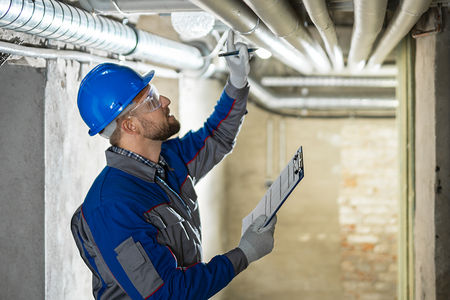When you need to isolate a section of piping for maintenance or repair, choosing the right method can mean the difference between a seamless project and unexpected downtime. Two of the most reliable options are pipe stopping and pipe freezing. But what are the differences—and which is right for your application?
At RAK Industrial Services, we help facility managers and engineers keep operations running safely and efficiently, no matter the challenge. Here’s what you need to know.
What Is Pipe Stopping?
Pipe stopping is a technique that temporarily blocks the flow in a pipeline using mechanical or inflatable plugs. It’s widely used for planned maintenance, tie-ins, and even emergency repairs—often with the system still live.
When is pipe stopping the smart choice?
Pipe stopping is especially effective when:
- You need to isolate a section of pipe without draining the system.
- The pipeline carries fluids that cannot be safely or easily frozen.
- You’re working with large diameter or non-metallic pipes.
This method is versatile, fast, and well-suited to both routine maintenance and urgent interventions.
What Is Pipe Freezing?
Pipe freezing involves creating a solid ice plug inside the pipe using liquid nitrogen or carbon dioxide applied to the pipe’s exterior. This ice plug stops fluid flow in the targeted section, letting you work downstream—often with no need to drain or depressurize the entire system.
Pipe freezing is ideal when:
- The process fluid is water or a compatible liquid that can freeze safely.
- You want minimal system disruption.
- The pipe section is relatively small or accessible.
This approach is often chosen for quick, non-invasive pipe isolation on water lines or other suitable systems.
Comparing Pipe Stopping and Pipe Freezing
While both methods can keep your facility running during repairs, there are important differences to consider:
Pipe Stopping Advantages:
- Works with a wide range of pipe sizes, fluids, and materials
- No risk of freeze/thaw stress or pipe cracks
- Ideal for gas lines or fluids that don’t freeze
Pipe Freezing Advantages:
- No need to open or access the pipe interior
- Faster setup for small-diameter water lines
- No introduction of foreign materials
Potential Limitations:
- Pipe stopping requires internal access for plug placement and careful sealing
- Pipe freezing is limited to pipes that can safely form an ice plug and maintain freezing temperatures throughout the repair
Which Solution Is Right for Your Facility?
Choosing between pipe stopping and pipe freezing depends on your process, fluid type, operating pressures, and safety requirements. Here are some quick considerations to help you decide:
- For large, high-pressure, or specialty lines, pipe stopping is typically safer and more effective.
- For smaller, accessible water lines where speed is key, pipe freezing is often preferred.
- If you need to avoid introducing new materials or can’t access the pipe interior, freezing may be ideal.
- For gas lines, chemicals, or systems that are sensitive to freezing, pipe stopping is the better choice.
Still unsure? The RAK Industrial Services team can assess your system, review your repair goals, and recommend the best, safest approach—minimizing disruption and keeping your operation on-line.
Why Trust RAK Industrial Services?
With years of experience in emergency leak repairs, advanced carbon fiber solutions, and rapid on-line restoration, RAK is the partner industrial leaders trust for:
- 24/7 rapid response and expert on-line pipe isolation
- Safe, compliant solutions—no unnecessary shutdowns
- Positive testimonials from plant engineers and maintenance teams who value speed, quality, and reliability
Conclusion
Whether you choose pipe stopping or pipe freezing, RAK Industrial Services delivers the knowledge, technology, and rapid response needed to keep your facility running. Don’t let isolation challenges threaten your uptime or budget—partner with the experts and get it done right the first time.


